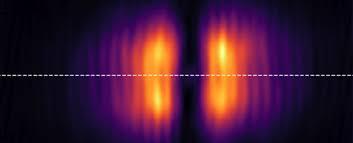
Scientists ‘Freeze’ Light for the First Time
In a groundbreaking research, a team of international scientists has successfully turned light into a supersolid for the first time. This achievement has opened up new possibilities in the field of physics and has the potential to revolutionize our understanding of matter.
The research was published in the journal Nature and was conducted by a team of scientists from Italy, Germany, and the United States. To create the supersolid, the researchers used a piece of gallium arsenide that had been shaped with special ridges. They then fired a laser at the material, which caused the light to become trapped and frozen in place.
A supersolid is a state of matter that combines the properties of both a solid and a superfluid. In a solid, the particles are arranged in a fixed pattern and do not flow, while in a superfluid, the particles are able to flow freely without any resistance. A supersolid, on the other hand, has the ability to maintain its shape and structure while still being able to flow and respond to external forces.
The creation of a supersolid has been a topic of interest for scientists for many years, as it has the potential to be used in a wide range of applications, from medical devices to advanced materials. However, until now, it has been difficult to achieve this state of matter due to the complexity of the materials and the conditions required to create it.
The researchers used a technique called “optical trapping” to create the supersolid. This involves using a laser to trap and manipulate the particles in the material, allowing them to be arranged in a specific pattern. The laser was able to interact with the particles in the material, causing them to become trapped and frozen in place.
The achievement of creating a supersolid is not only significant for the field of physics, but it also has the potential to be used in a wide range of applications. For example, it could be used to create advanced materials that are able to respond to external forces, such as medical devices that are able to adapt to different situations.
The researchers believe that this breakthrough is just the beginning and that it will open up new possibilities for the creation of supersolids. They are already working on new experiments to further explore the properties of supersolids and to develop new applications for this state of matter.
In conclusion, the creation of a supersolid is a significant achievement that has the potential to revolutionize our understanding of matter. The ability to create a state of matter that combines the properties of both a solid and a superfluid has the potential to be used in a wide range of applications, from medical devices to advanced materials.






